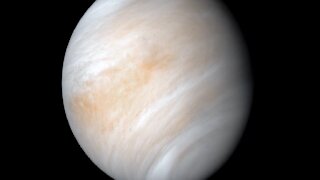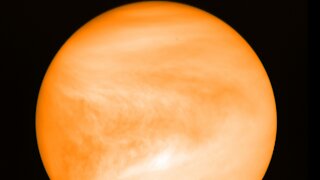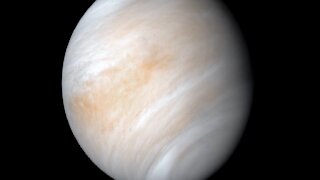Science News: Prospects For Life On Planet Venus Atmosphere Fade - The Venus Theory Alma Observatory
If you like this video - put Thumb Up button (please) and
Subscribe to "Science news" channel. We will make this universe smarter together!
Similar in size and structure to Earth, Venus has been called Earth's twin. These are not identical twins, however – there are radical differences between the two worlds.
Venus has a thick, toxic atmosphere filled with carbon dioxide and it’s perpetually shrouded in thick, yellowish clouds of mostly sulfuric acid that trap heat, causing a runaway greenhouse effect. It’s the hottest planet in our solar system, even though Mercury is closer to the Sun. Venus has crushing air pressure at its surface – more than 90 times that of Earth – similar to the pressure you'd encounter a mile below the ocean on Earth.
Venus was the first planet to be explored by a spacecraft – NASA’s Mariner 2 successfully flew by and scanned the cloud-covered world on Dec. 14, 1962. Since then, numerous spacecraft from the U.S. and other space agencies have explored Venus, including NASA’s Magellan, which mapped the planet's surface with radar. The former Soviet Union is the only nation to land on the surface of Venus to date, though the spacecraft did not survive long in the harsh environment.
FACTS ABOUT PLANET VENUS:
While the surface rotates slowly, the winds blow at hurricane force, sending clouds completely around the planet every five days.
Venus’ extreme temperatures and acidic clouds make it an unlikely place for life as we know it.
The planet’s surface temperature is about 900 degrees Fahrenheit (465 degrees Celsius)—hot enough to melt lead.
Venus orbits our Sun, a star. Venus is the second closest planet to the sun at a distance of about 67 million miles (108 million km).
Venus' solid surface is a volcanic landscape covered with extensive plains featuring high volcanic mountains and vast ridged plateaus.
Venus has no moons and no rings.
One day on Venus lasts 243 Earth days because Venus spins backwards, with its sun rising in the west and setting in the east.
Venus orbits our Sun, a star. Venus is the second closest planet to the sun at a distance of about 67 million miles (108 million km).
If the sun were as tall as a typical front door, the Earth and Venus would each be about the size of a nickel.
Science News: Prospects For Life On Planet Venus Atmosphere Fade - The Venus Theory Alma Observatory
Science News: Prospects For Life On Planet Venus Atmosphere Fade - The Venus Theory Alma Observatory
Is there life floating in the clouds of Venus? - BBC News
capturing christianity, eso, acts 17, venus theory , space engine, Apologetic, Apologetics science, Apologetic news, Capturing Christianity Venus, russian venus planet
#Science #Astronomy #Apologetics #Christianity
-
 14:28
14:28
PRconservative
3 years ago $15.43 earnedTucker Goes after Fake News and Science
18.2K4 -
 1:42
1:42
rumblestaff
3 years agoPossible Signs of Life Found On Venus
3382 -
 3:59
3:59
MattsNewsNetwork
3 years agoMatt’s News Network 10-05-2020. Greenhouse Gas Theory Disproved.
45 -
 5:47
5:47
ChumskyBearEducation
3 years agoLearn all about Planet Earth with Chumsky Bear | Science | Blue Planet | Educational Videos 4 Kids
10 -
 1:28
1:28
Newsy
3 years agoNASA Considers Venus Mission After Scientists Find Potential Life Sign
681 -
 0:42
0:42
Just the News
3 years agoGas on Venus could lead to signs of life
6.99K3 -
 9:01
9:01
DrunkNews
3 years ago $0.09 earnedDrunk News - Conspiracy Theory About AOC
417 -
 4:01
4:01
WXYZ
3 years agoPlanet Fitness
287 -
 2:55
2:55
JimmysMooies
3 years agoVenus Fly Trap
71 -
 1:28
1:28
BraggRanch
3 years ago $0.01 earnedPowerful Prospects
94